Nestled in the heart of England’s innovation corridor, Low Carbon Innovation Fund 2 (LCIF2) stands as a beacon for water entrepreneurs seeking to make their mark in sustainable technology. With €25.48 million in committed capital and a laser focus on low-carbon solutions, this unique fund has carved out a distinctive niche in the water technology landscape. By combining strategic co-investments with hands-on governance support, LCIF2 isn’t just writing checks – it’s actively shaping the future of water innovation through carefully curated partnerships with founders and fellow investors.
Low Carbon Innovation Fund is part of my Ultimate Water Investor Database, check it out!
Investor Name: Low Carbon Innovation Fund 2
Investor Type: Impact
Latest Fund Size: $28.7 Million
Dry Powder Available: No
Typical Ticket Size: $250k – $1M
Investment Themes: digital metering and submetering, decentralized non-chemical water treatment, energy-water nexus
Investment History: $1124166.67 spent over 2 deals
Often Invests Along:
Already Invested In: 8power Ltd., ANB Sensors
Leads or Follows: Follow
Board Seat Appetite: Always
Key People:
The Investment Strategy: Co-Creating Water Innovation
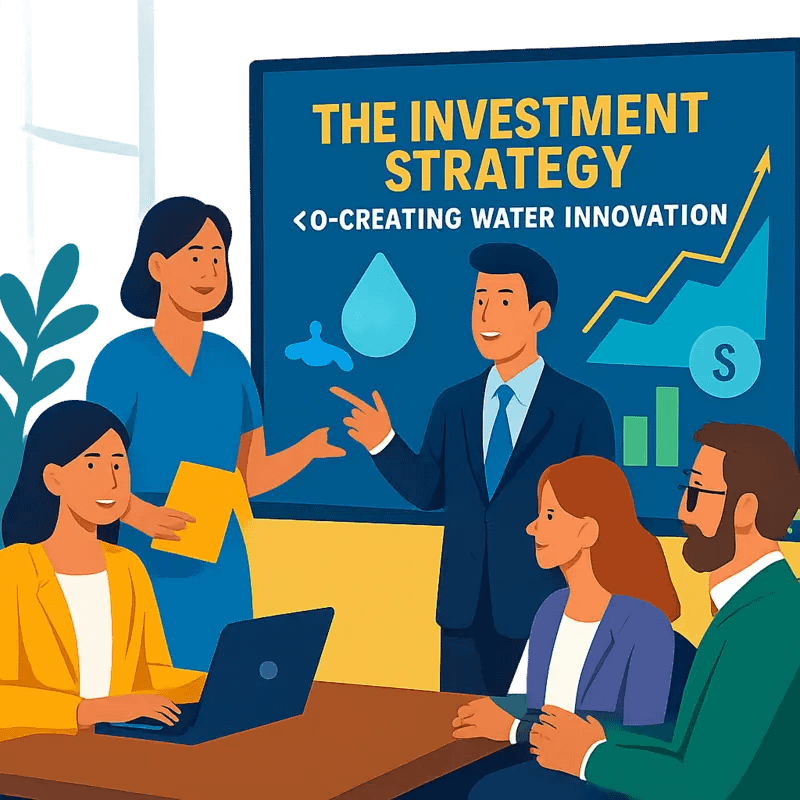
The Low Carbon Innovation Fund 2 (LCIF2) has pioneered a distinctive co-investment approach that catalyzes early-stage water technology development while managing risk through strategic partnerships. At its core, the £25M fund employs a matching investment model that amplifies its impact across the water innovation landscape.
LCIF2’s investment strategy centers on providing growth capital in the £250,000-500,000 range, specifically targeting early-stage water technology companies at critical scaling points. This strategic focus allows the fund to support ventures that have proven their core technology but require capital to accelerate market entry and expansion. Learn more about water tech investment strategies
The co-investment model is particularly powerful as it requires matching private capital for each investment, effectively doubling the funding available to portfolio companies. This approach serves multiple purposes – it validates market interest, shares risk, and builds valuable strategic partnerships that support long-term growth. For every pound LCIF2 invests, private investors must match or exceed that amount, creating a multiplier effect that expands the total capital pool available to water innovators.
The fund maintains a disciplined focus on water technologies that demonstrate clear potential for carbon reduction and environmental impact. Key investment criteria include proven technical validation, clear market opportunity, and strong management teams. Portfolio companies must show how their solutions address critical water challenges while contributing to carbon reduction goals.
LCIF2’s portfolio reflects this targeted strategy, with investments spanning water efficiency, treatment, monitoring, and resource recovery technologies. The fund acts as more than just a capital provider – it takes an active role in supporting portfolio companies through industry connections, strategic guidance, and follow-on funding support.
By focusing on the critical early commercialization phase and leveraging co-investment partnerships, LCIF2 has created a sustainable model for advancing water innovation. This approach helps bridge the notorious “valley of death” that many promising water technologies face between pilot demonstration and full commercial deployment.
Water Innovation Themes: Digital Transformation Leads the Way
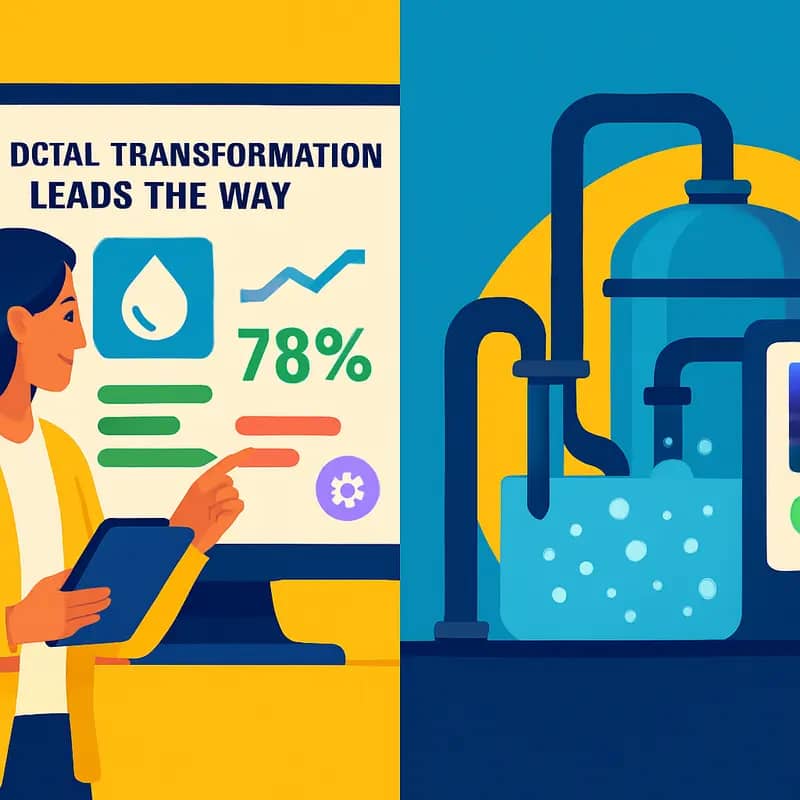
The Low Carbon Innovation Fund 2’s investment portfolio reflects a strategic emphasis on digital transformation within the water sector. This focus acknowledges the pivotal role of digital solutions in addressing critical water management challenges while reducing environmental impact.
At the heart of LCIF2’s digital water strategy lies the integration of Internet of Things (IoT) technologies for advanced monitoring and control systems. These solutions enable real-time data collection and analysis across water infrastructure networks, empowering utilities to optimize operations and rapidly respond to system anomalies. Smart sensors and monitoring devices form an interconnected web of data points, providing unprecedented visibility into water distribution networks, treatment processes, and consumption patterns.
The fund has demonstrated particular interest in non-chemical treatment technologies that leverage digital controls and automation. These innovations represent a significant departure from traditional chemical-intensive approaches, offering more sustainable alternatives for water and wastewater treatment. Advanced oxidation processes controlled by AI-driven systems exemplify this technological convergence, delivering improved treatment efficiency while minimizing environmental impact.
The energy-water nexus represents another crucial investment theme, where digital innovation plays a transformative role. Smart grid integration and demand response systems help water utilities optimize their energy consumption patterns, reducing both operational costs and carbon footprint. Learn more about how utilities can cut energy-related carbon emissions.
LCIF2’s portfolio companies demonstrate the practical application of these digital innovations. For instance, their investments include solutions that employ machine learning algorithms to predict maintenance needs and optimize treatment processes. These technologies not only improve operational efficiency but also contribute to the fund’s broader mission of supporting low-carbon solutions in the water sector.
The convergence of digital technologies with water management creates opportunities for predictive analytics and decision support systems. These tools enable water managers to anticipate system failures, optimize resource allocation, and improve overall system resilience. The result is a more sustainable and efficient water infrastructure that aligns with both environmental goals and economic objectives.
Beyond individual technologies, LCIF2’s digital water investments reflect a systemic approach to transformation. The fund recognizes that successful digital adoption requires integration across multiple layers of water infrastructure, from sensor networks to data analytics platforms and user interfaces. This comprehensive strategy ensures that digital innovations deliver meaningful improvements in water system performance while supporting the transition to a low-carbon economy.
Geographic Focus and Impact Metrics
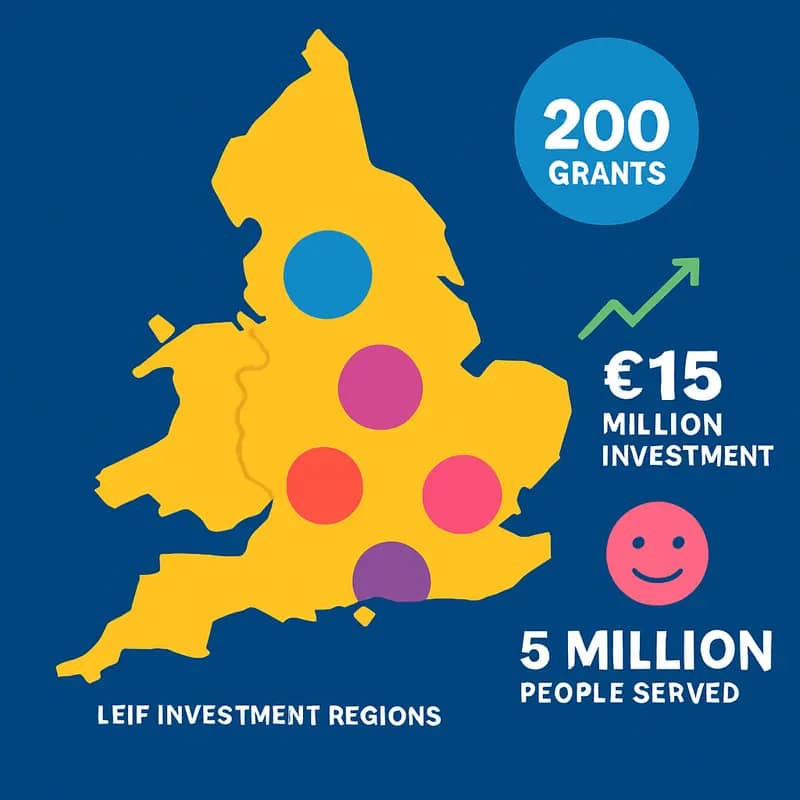
While headquartered in East England, LCIF2’s £25M investment mandate extends across England’s vibrant water technology landscape. The fund’s geographic concentration in the East of England leverages the region’s established water innovation ecosystem, including world-class research institutions and a dense network of water-focused startups. However, LCIF2 maintains flexibility to invest throughout England when compelling opportunities arise that align with their sustainable water technology thesis.
LCIF2 employs a comprehensive framework to measure both financial returns and environmental impact across their water technology portfolio. Key performance indicators focus on quantifiable water conservation metrics, including cubic meters of water saved, reduction in treatment chemicals, and improvements in operational efficiency. The fund tracks these metrics quarterly through standardized reporting requirements for portfolio companies.
Particularly noteworthy is LCIF2’s emphasis on carbon reduction potential, recognizing water technology’s crucial role in achieving net-zero goals. Portfolio companies must demonstrate clear pathways to reducing carbon emissions through their water solutions, whether via energy efficiency gains in treatment processes or enabling water reuse that lessens energy-intensive fresh water production.
Beyond environmental metrics, LCIF2 evaluates commercial success through traditional venture capital measures like revenue growth, market penetration, and follow-on funding secured. This dual-lens approach ensures portfolio companies deliver both financial sustainability and measurable environmental benefits.
The fund has developed a proprietary scoring system that weights various impact categories, helping standardize assessment across diverse water technology applications. This system considers factors like technology readiness, market size, and potential for impact scalability. Regular portfolio reviews using this framework help identify both leaders and laggards, enabling targeted support where needed.
As explored in how to mitigate 4 shades of water risk through impact investing, LCIF2’s approach demonstrates how strategic capital deployment can address multiple dimensions of water risk while generating attractive returns. Their rigorous impact measurement framework has become a model for other water-focused impact investors, showing how to effectively balance commercial and environmental objectives in the water technology sector.
Active Governance: Beyond Capital Investment

The Low Carbon Innovation Fund 2 (LCIF2) distinguishes itself through an investment approach that goes far beyond simple capital deployment. At the heart of their governance strategy lies active board participation and hands-on strategic support that creates lasting value for portfolio companies.
LCIF2’s governance model centers on appointing Non-Executive Directors (NEDs) or Board Observers to each portfolio company. These appointments serve multiple critical functions in supporting water technology ventures. The fund’s representatives bring decades of combined experience in commercializing innovative technologies, helping companies navigate regulatory frameworks, and scaling operations sustainably.
Through board representation, LCIF2 maintains close oversight of company performance while providing strategic guidance that helps founders avoid common pitfalls. Their NEDs actively participate in key decisions around business strategy, market entry approaches, and organizational development. This hands-on involvement enables portfolio companies to leverage LCIF2’s extensive network within the water sector, opening doors to potential customers, partners, and follow-on investors.
The Observer role proves particularly valuable for earlier-stage companies that benefit from LCIF2’s expertise without ceding formal board control. These Observers contribute strategic insights during critical inflection points while allowing founders to maintain operational autonomy. They also help companies establish robust governance frameworks and reporting processes that will attract future investment.
Beyond governance structures, LCIF2 provides practical support through specialized working groups focused on common challenges like regulatory compliance, supply chain optimization, and talent acquisition. These collaborative forums allow portfolio companies to share best practices and pool resources to address shared obstacles.
As highlighted in how to actively invest philanthropy and save the water world, this active investment approach has proven crucial for water technology ventures that often face lengthy commercialization timelines and complex stakeholder environments. LCIF2’s governance model helps companies maintain strategic focus while building the operational capabilities needed for long-term success.
The fund’s commitment to active governance reflects a deep understanding that water technology ventures require more than just capital to succeed. Through board participation and hands-on support, LCIF2 helps transform promising innovations into sustainable businesses that can deliver meaningful environmental impact while generating commercial returns.
The Blueprint: LCIF2’s Investment Strategy
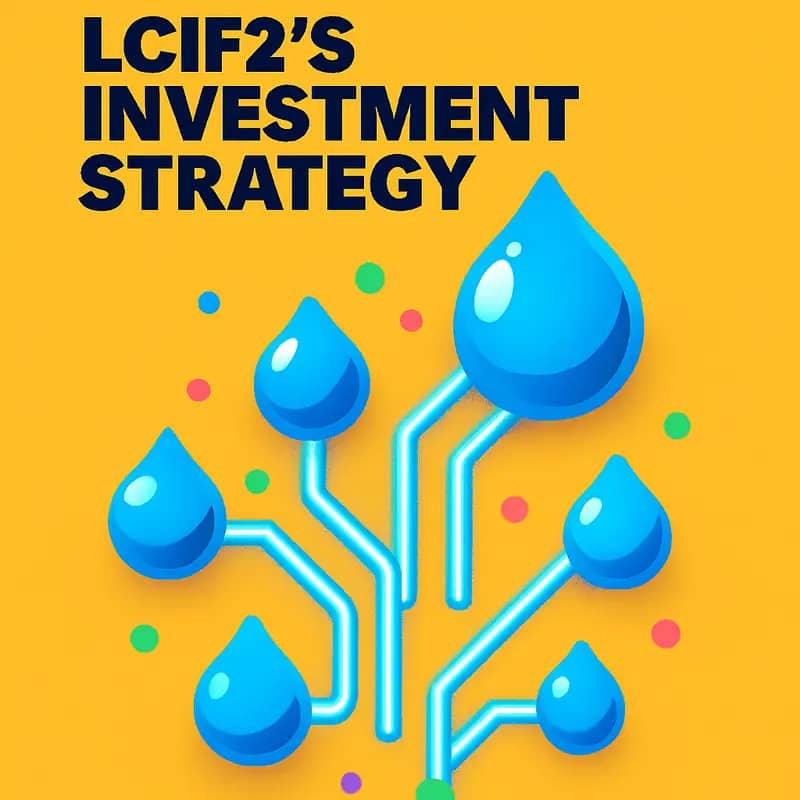
The Low Carbon Innovation Fund 2 (LCIF2) has pioneered a distinctive approach to water technology investments, establishing a £25M fund that strategically targets innovations at the intersection of sustainability and water management. Their investment strategy hinges on three core pillars: rigorous selection criteria, strategic co-investment partnerships, and comprehensive post-investment support.
LCIF2’s investment criteria emphasize solutions that demonstrably reduce carbon emissions while addressing critical water challenges. Technologies must showcase clear commercial viability and scalability potential. The fund particularly focuses on innovations in water treatment efficiency, resource recovery, and smart water management systems that can deliver measurable environmental impact alongside financial returns.
The fund’s co-investment model represents a significant departure from traditional venture capital approaches. By requiring match funding from private investors, LCIF2 effectively doubles the capital available to water entrepreneurs while providing crucial validation of their business models. This approach has proven particularly effective in bridging the notorious “valley of death” that often prevents promising water technologies from reaching commercial scale.
Target sectors include advanced treatment technologies, digital water solutions, and resource recovery innovations. LCIF2 shows particular interest in technologies that can demonstrate multiple benefits – for instance, wastewater treatment solutions that simultaneously reduce energy consumption and recover valuable resources. This aligns perfectly with the growing market demand for circular economy solutions in the water sector.
What sets LCIF2 apart is its unique value proposition for water entrepreneurs. Beyond capital, the fund provides access to an extensive network of industry partners, technical expertise, and market connections. This comprehensive support system helps portfolio companies navigate the complex regulatory landscape and accelerate their path to market adoption.
The fund’s investment thesis recognizes that water technology commercialization requires patient capital and deep sector expertise. Their typical investment horizon extends to 5-7 years, acknowledging the longer development cycles common in water technology. This patient approach, combined with their focus on sustainable solutions, positions LCIF2 as a crucial catalyst in the water sector’s transition toward a more sustainable future.
By maintaining a disciplined focus on technologies that can deliver both environmental and financial returns, LCIF2 has created a blueprint for sustainable water technology investment that addresses both market needs and environmental imperatives. Their approach demonstrates how strategic capital deployment can accelerate the adoption of innovative water solutions while generating attractive returns for investors.
From Lab to Market: Portfolio Success Stories

The Low Carbon Innovation Fund 2’s strategic investments have catalyzed remarkable transformations in water technology companies, demonstrating how targeted funding can accelerate sustainable solutions from conception to market implementation.
One standout portfolio company has revolutionized membrane filtration technology by developing a novel biomimetic approach that reduces energy consumption by 40% compared to conventional systems. The fund’s early-stage investment enabled crucial pilot demonstrations at municipal treatment plants, validating the technology’s effectiveness at scale. This success led to a series B funding round of £8 million, accelerating commercial deployment across the UK and Europe.
Another compelling success story emerges from the smart water monitoring sector, where an LCIF2-backed enterprise pioneered AI-powered leak detection systems. Their technology processes real-time data from existing infrastructure to identify potential failures before they occur, reducing non-revenue water losses by up to 92%. The fund’s support facilitated crucial partnerships with major utilities, resulting in water savings exceeding 500 million liters annually.
In the realm of water reuse, a portfolio company has developed an innovative decentralized treatment system that enables commercial buildings to recycle greywater on-site. The technology’s modular design and sophisticated control systems make it particularly attractive for urban applications where space is limited. LCIF2’s investment supported the crucial transition from prototype to commercial product, including obtaining necessary certifications and establishing manufacturing partnerships.
Beyond direct funding, LCIF2’s involvement has provided portfolio companies with invaluable industry connections and expertise. The fund’s network has helped these enterprises navigate regulatory frameworks, establish customer relationships, and attract follow-on investment. This comprehensive support system has proven particularly valuable for early-stage companies tackling complex technical and market challenges.
Collectively, these success stories underscore LCIF2’s role in bridging the critical gap between promising innovations and market-ready solutions. The fund’s approach combines patient capital with strategic support, enabling water technology companies to overcome the typical hurdles that often impede commercialization in the water sector. These companies are not just achieving commercial success – they’re delivering measurable environmental impact through reduced energy consumption, water conservation, and improved resource efficiency.
Impact Metrics: Measuring Water Innovation Success

The Low Carbon Innovation Fund 2’s (LCIF2) approach to impact measurement exemplifies the dual return philosophy that modern water technology investors demand. By tracking both financial performance and environmental outcomes, LCIF2 has developed a comprehensive framework that validates its £25M investment strategy while driving meaningful progress toward sustainability goals.
At the core of LCIF2’s measurement system lies a sophisticated set of water conservation metrics. Portfolio companies must report their solutions’ direct water savings in cubic meters, along with projected savings at scale. These metrics get verified through pilot projects and customer implementation data. Beyond pure volume measurements, the fund tracks water quality improvements through reductions in contaminant levels, biochemical oxygen demand, and other key indicators.
Sustainability performance receives equal weight through carefully selected environmental indicators. Carbon emissions avoided through water and energy efficiency gains form a central metric, directly linking to the fund’s low-carbon mandate. Additional indicators include reductions in chemical usage, waste minimization achievements, and ecosystem health markers in watersheds where portfolio companies operate.
LCIF2 has integrated these metrics into a scoring system that informs both initial investment decisions and ongoing portfolio management. Quarterly reviews assess progress against targets, while annual comprehensive evaluations determine whether companies qualify for follow-on funding. This data-driven approach allows the fund to optimize its impact by doubling down on high-performing solutions while helping struggling ventures course-correct.
Beyond individual company tracking, LCIF2 aggregates portfolio-wide metrics to demonstrate collective impact. These roll-up statistics prove invaluable for attracting co-investment partners and making the business case for water technology innovation. The fund’s latest impact report showed portfolio companies collectively saved over 50 million cubic meters of water while avoiding 75,000 metric tons of CO2 emissions annually.
Importantly, LCIF2 recognizes that impact metrics must evolve with the water sector’s needs and emerging sustainability frameworks. The fund regularly refines its measurement approach based on stakeholder input and new environmental, social and governance (ESG) standards. This adaptive strategy ensures impact metrics remain relevant and actionable for driving positive change in the water technology landscape.
As explored in this analysis of water risk assessment methods, robust measurement frameworks are essential for transforming environmental challenges into concrete business opportunities. LCIF2’s metrics approach exemplifies how thoughtful impact assessment can align profit with purpose in water technology investment.
Future Flows: The Road Ahead for Water Tech Investment
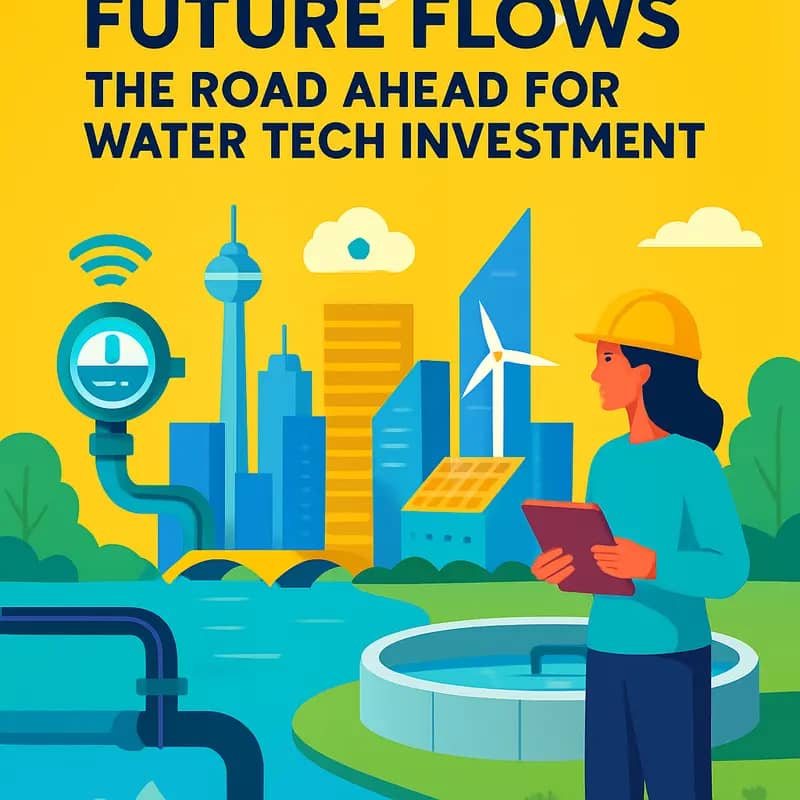
Strategic deployment of capital stands at the forefront of water innovation as LCIF2 charts an ambitious course for scaling breakthrough technologies. Building on established impact metrics, the fund’s forward-looking strategy emphasizes catalytic partnerships that can accelerate adoption of sustainable water solutions across multiple sectors.
A key focus lies in identifying technologies that demonstrate both commercial viability and transformative environmental impact. By leveraging its £25M fund alongside co-investment partners, LCIF2 aims to create force-multiplier effects – where initial capital unlocks additional funding sources and accelerates market penetration. This approach recognizes that solving water challenges requires coordinated action across the innovation ecosystem.
Industry trends point toward increased integration of digital technologies, nature-based solutions, and circular economy principles. The rise of impact investing in water tech suggests growing recognition of water’s fundamental role in climate resilience and sustainability. LCIF2’s investment thesis aligns with these shifts by prioritizing solutions that address multiple challenges simultaneously – from water quality and availability to energy efficiency and resource recovery.
Partnership models are evolving to better support scale-up and commercialization. Rather than viewing investments in isolation, LCIF2 cultivates networks of strategic partners – including utilities, industrial end-users, and fellow investors. This collaborative approach helps de-risk new technologies while creating clearer pathways to market adoption.
Looking ahead, several key factors will shape water tech investment:
- Rising emphasis on technologies that advance water-energy-climate nexus solutions
- Growing demand for data-driven optimization and predictive analytics
- Increased focus on modular, decentralized treatment systems
- Enhanced interest in resource recovery and circular economy applications
- Greater integration of natural infrastructure alongside engineered solutions
LCIF2’s vision centers on catalyzing systemic change rather than just funding individual companies. By strategically deploying capital, fostering partnerships, and focusing on scalable impact, the fund aims to help reshape water infrastructure for a more sustainable future. Success will require sustained commitment to both financial returns and measurable environmental benefits – proving that profitability and positive impact can advance hand in hand.
Final words
Low Carbon Innovation Fund 2 represents a distinctive force in water technology investment, combining strategic capital deployment with active governance to accelerate sustainable innovation. Their approach of co-investing alongside private sector partners while maintaining board-level involvement creates a powerful support structure for water entrepreneurs. With €25.48 million in committed capital and a growing portfolio of breakthrough technologies, LCIF2 is proving that focused, regional investment strategies can drive significant impact in the water sector. As water challenges continue to evolve, LCIF2’s model of hands-on investment and strategic support offers valuable lessons for both entrepreneurs and fellow investors in the water technology ecosystem.
Wanna explore the Full List of Water Investors that cut at least two checks over the past decade? Check it out and bookmark it, I update it regularly!
Learn more: https://dww.show/the-ultimate-water-investor-database/
About us
Through my “(don’t) Waste Water” platform, I offer unique and insightful coverage of the water industry that combines technical expertise with engaging storytelling. If you haven’t yet, it might be time for you to subscribe to the podcast, the youtube channel and/or the newsletter!
